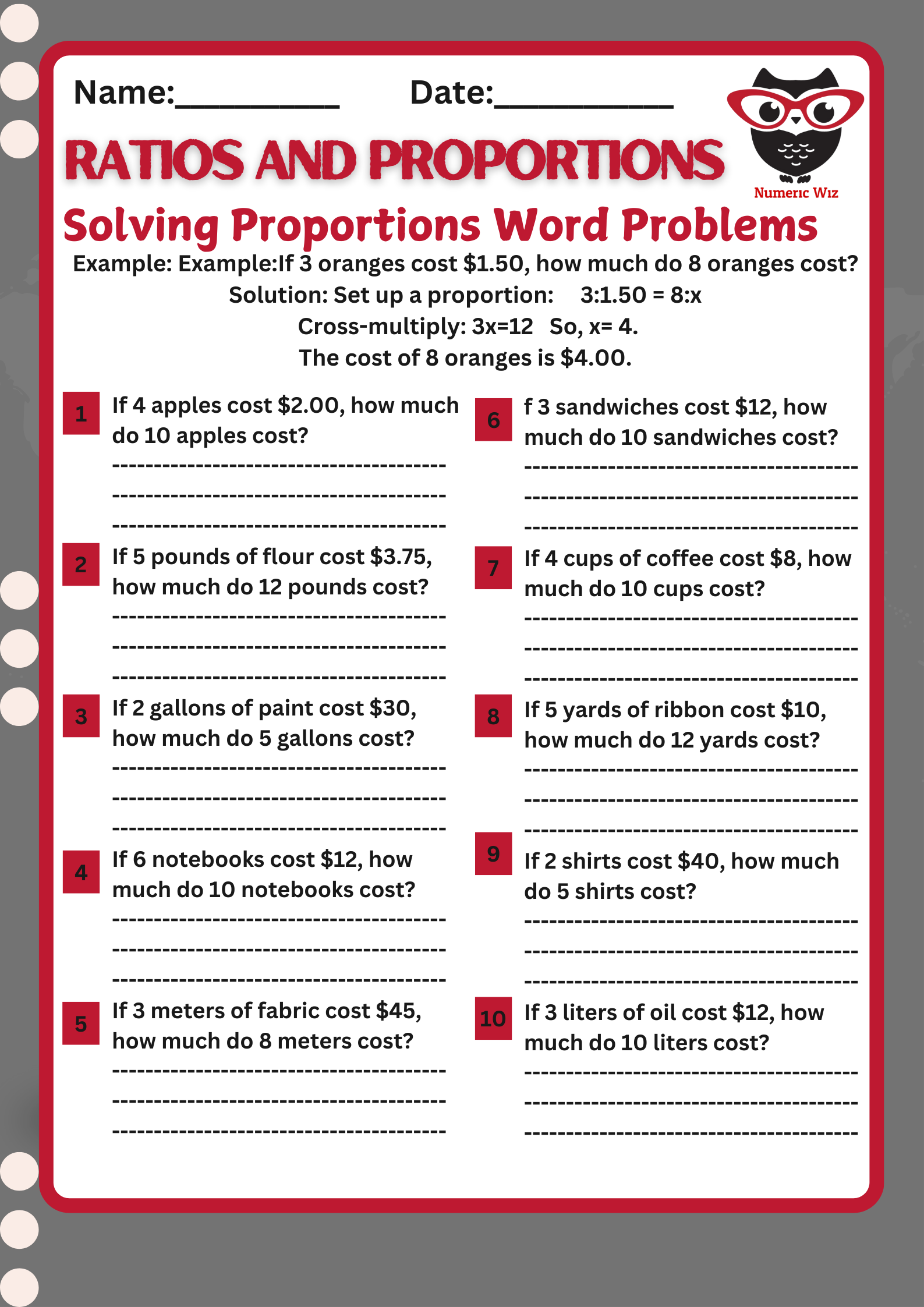
Have you ever doubled a recipe, calculated the best deal while shopping, or figured out how long a road trip will take? If so, you’ve already used proportions without even realizing it!
A proportion is simply a statement that two ratios are equal. It’s a way of comparing two things that change at the same rate. Understanding proportions helps us solve real-world problems effortlessly—whether it’s adjusting ingredients, converting measurements, or comparing prices.
 How Do You Identify a Proportion?
How Do You Identify a Proportion?To determine if two ratios form a proportion, you can:
Cross-multiply – If the cross-products are equal, the ratios are proportional.
Simplify the fractions – If two ratios reduce to the same simplest form, they are proportional.
Use a table or graph – If the values follow a consistent pattern or form a straight line through the origin, they are proportional.
Solving Proportions:
 The Magic Trick!
The Magic Trick!
Once we identify a proportion, solving for a missing. value is easy! Just follow these steps:
![]() Write the proportion as two equal fractions.
Write the proportion as two equal fractions.
![]() Cross-multiply to create an equation.
Cross-multiply to create an equation.
![]() Solve for the unknown by dividing both sides.
Solve for the unknown by dividing both sides.
![]() Check your answer by substituting it back into the original proportion.
Check your answer by substituting it back into the original proportion.
Liam is printing photos for his scrapbook. He knows that 3 photos take 6 minutes to print. If he wants to print 15 photos, how long will it take?
Step 1: Identify the Proportion
We set up a ratio comparing photos to time:
3 photos /6 minutes =15 photos/ 𝑥
Since the number of photos and time should increase at the same rate, we set these two ratios equal to each other:
3/6=15/x
Step 2: Solve for x using Cross-Multiplication
Multiply across the equal sign:
3×x=6×15
3x=90
𝑥 = 90/3
Step 3: Answer the Question
It will take 30 minutes to print 15 photos at the same rate.
Step 4: Check Your Answer
Let’s simplify the original ratio:
3/6 = 1/2
Now, check if the new ratio is equivalent:
15/30 = 1/2
Since both ratios are equal, our answer is correct!
Proportions are everywhere! They help us:
Mastering proportions means making math work for you, not the other way around!
Let’s uncover the power of proportions with a real-world example!
For a limited time
